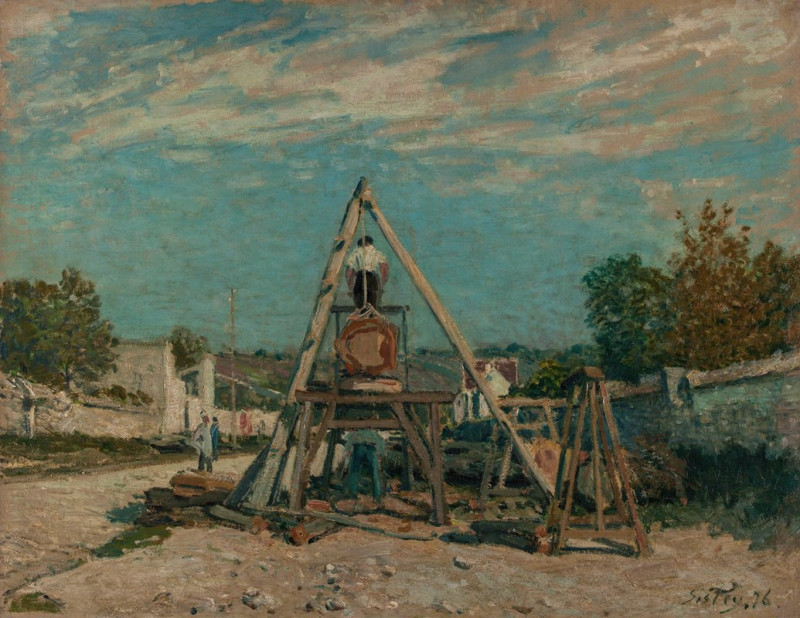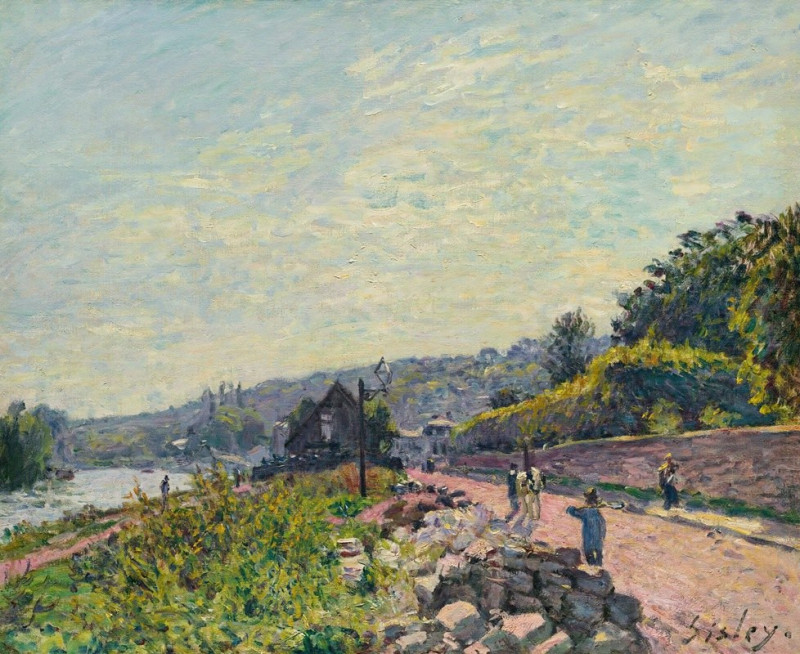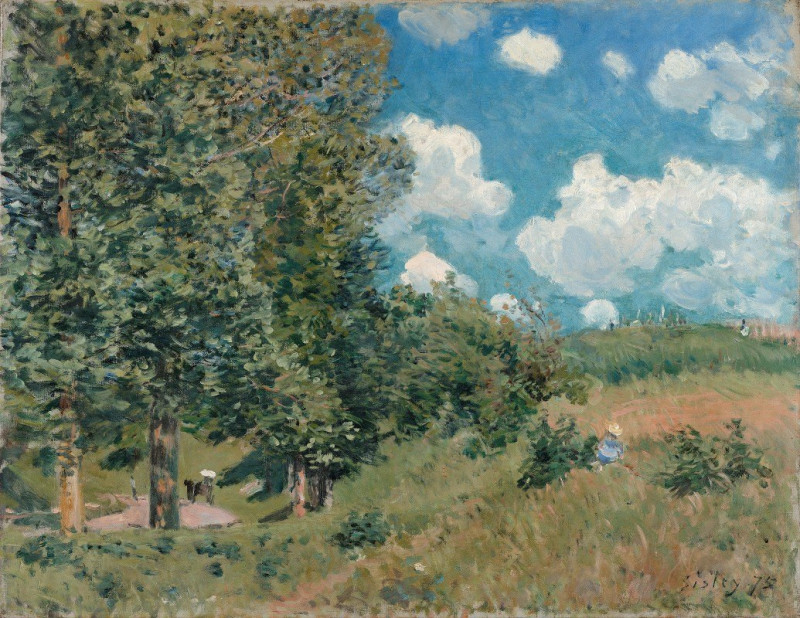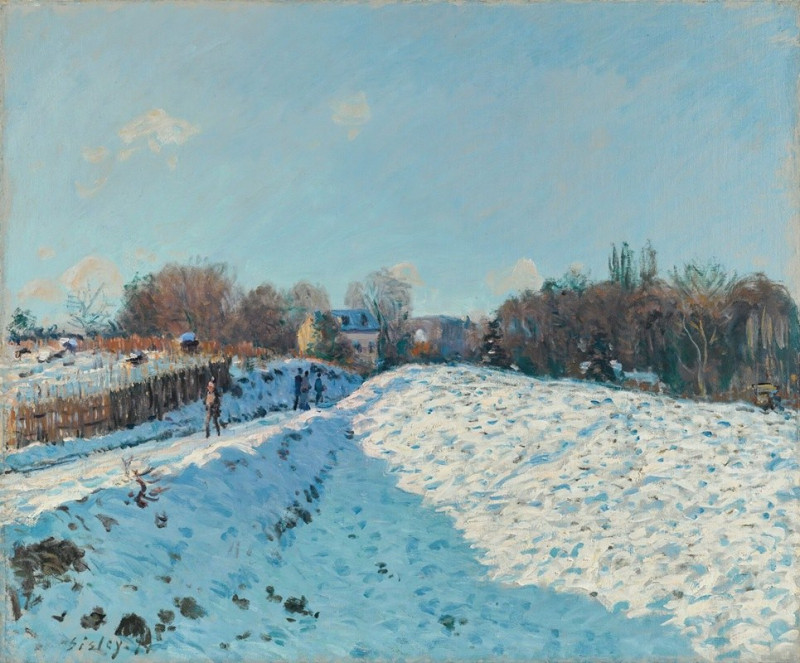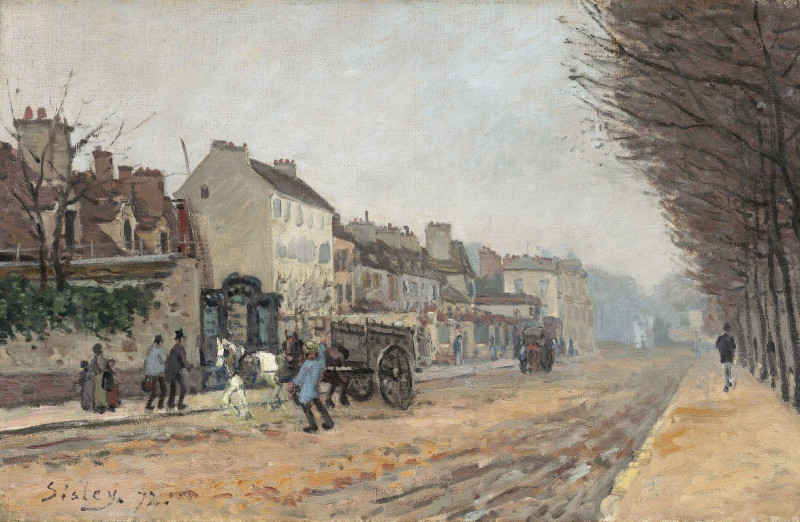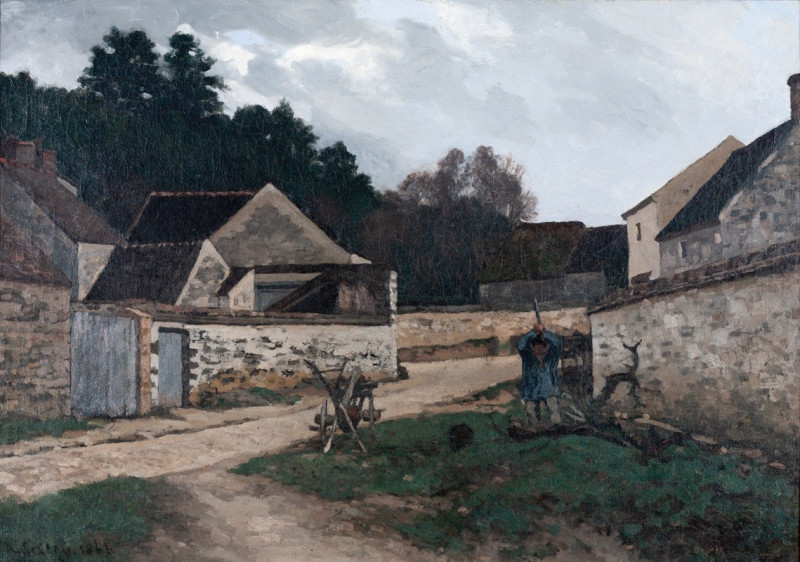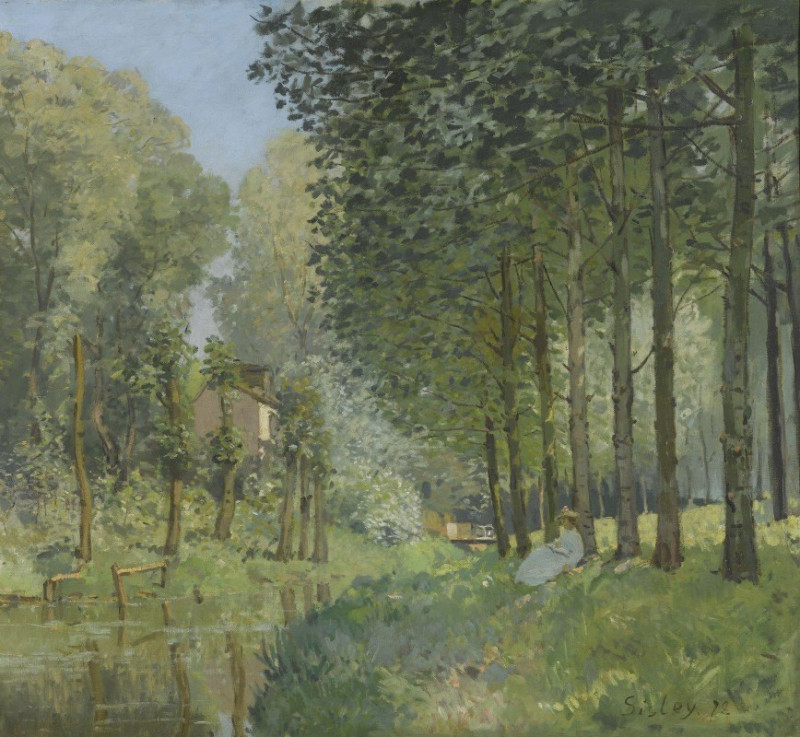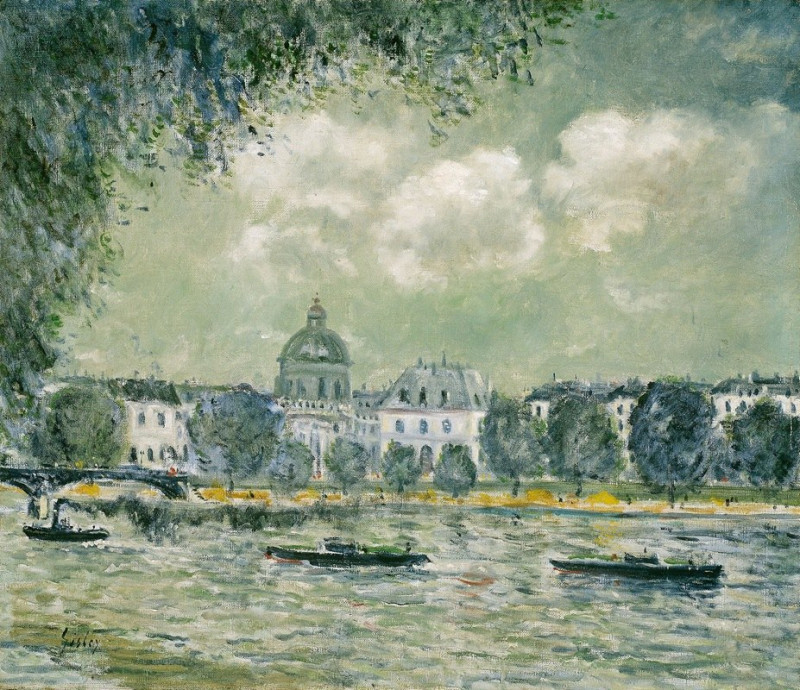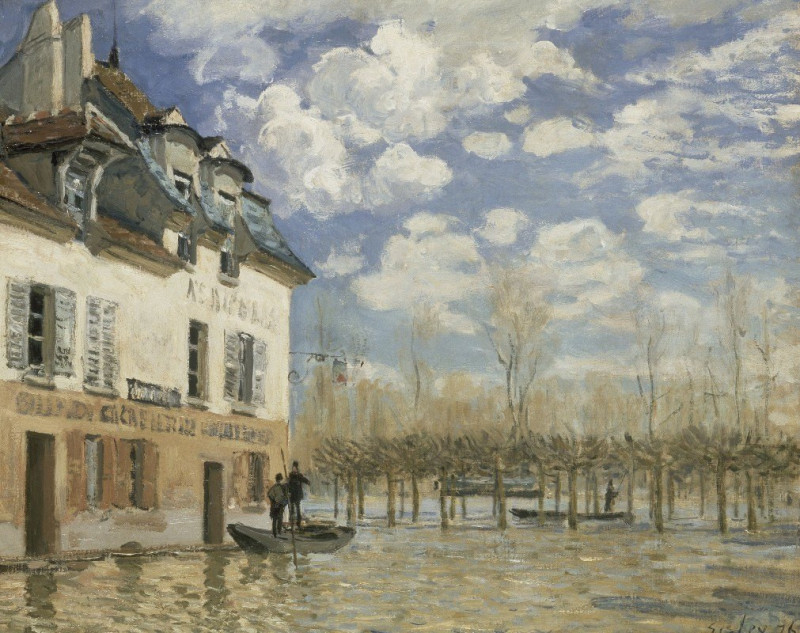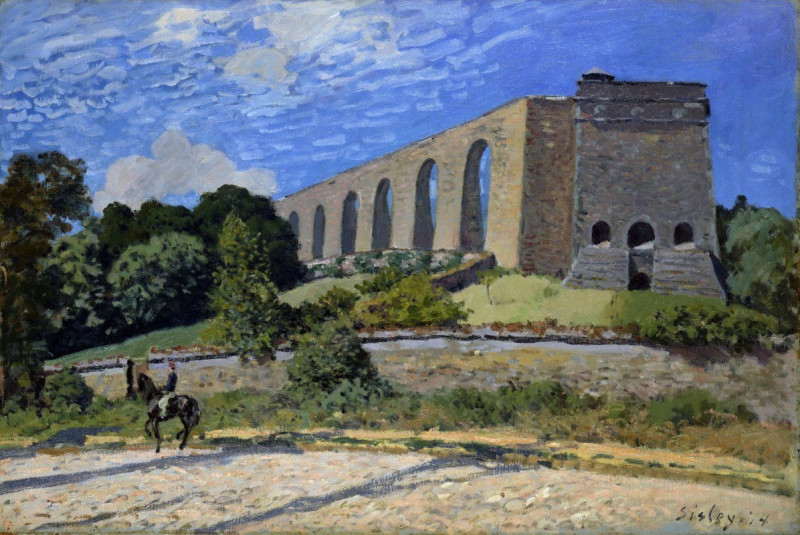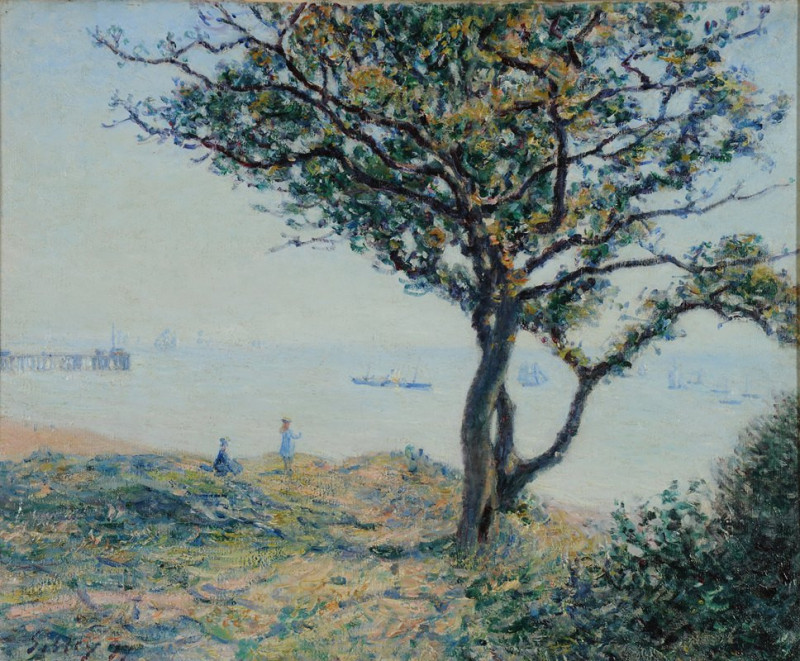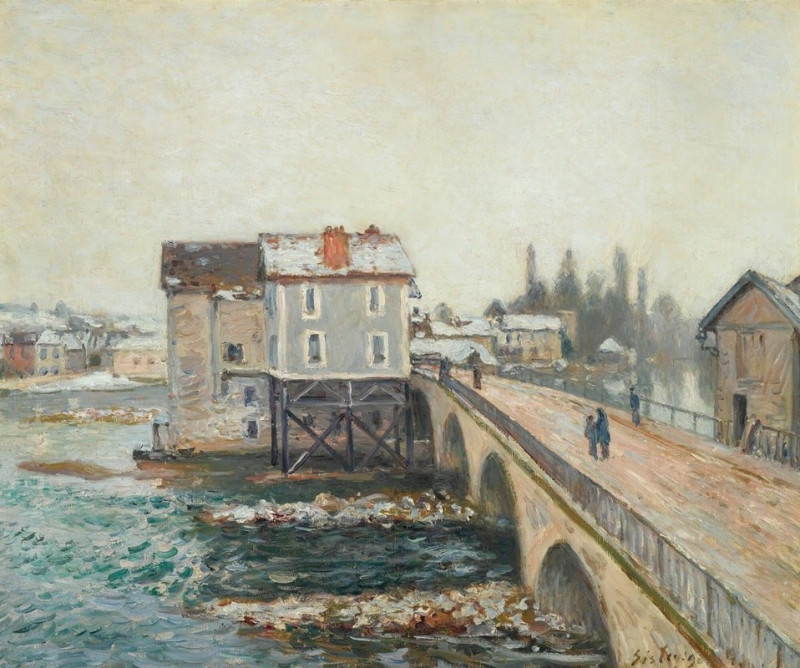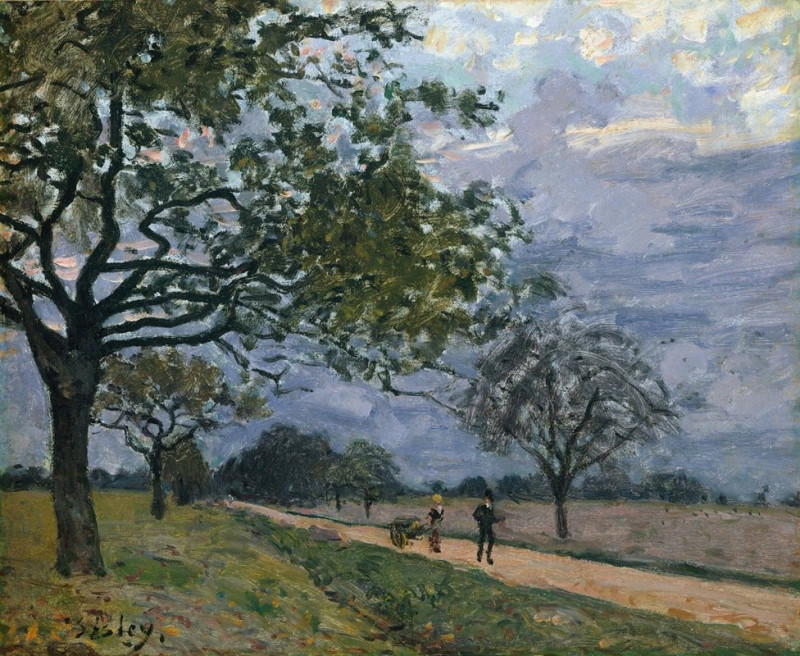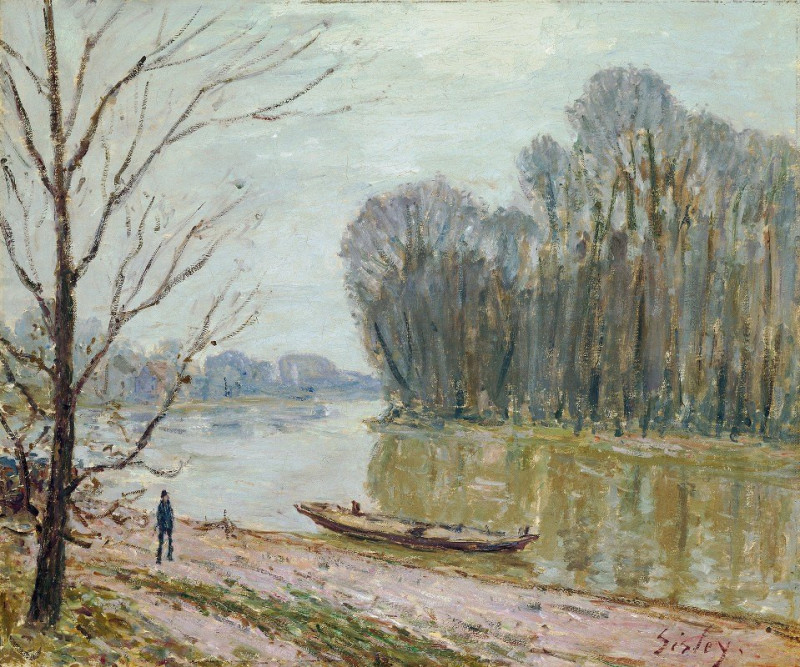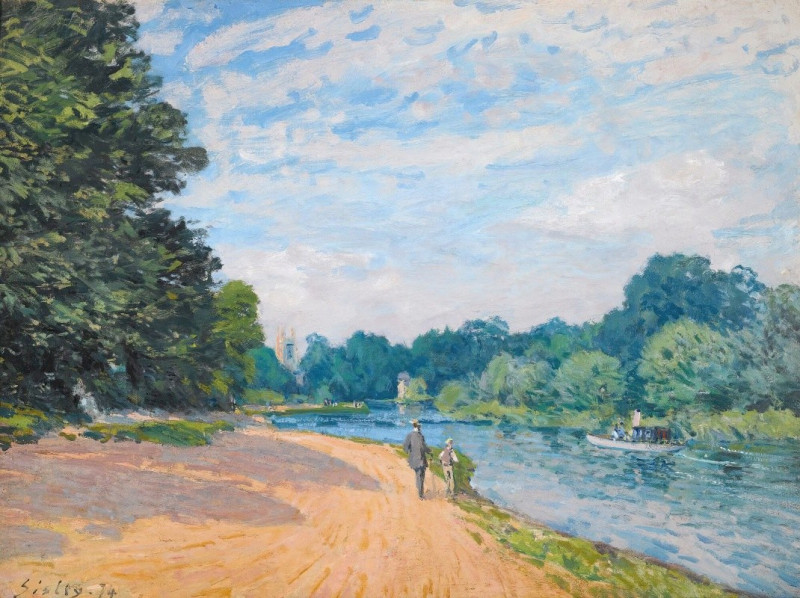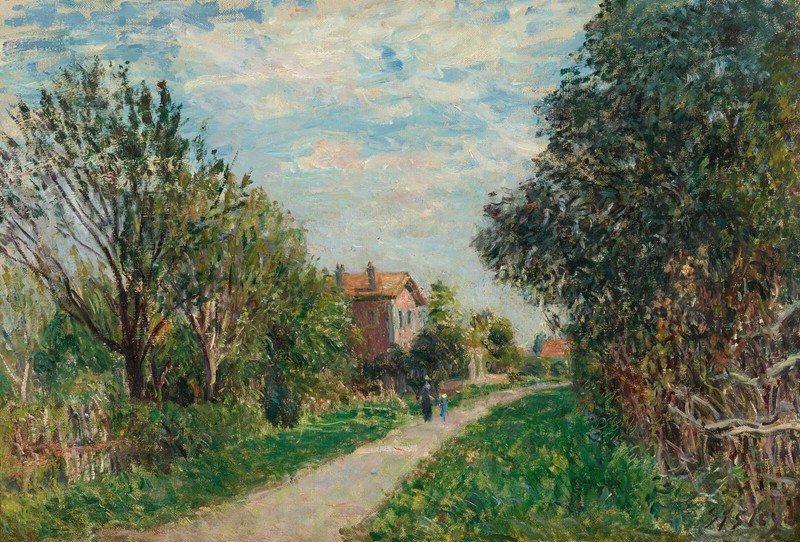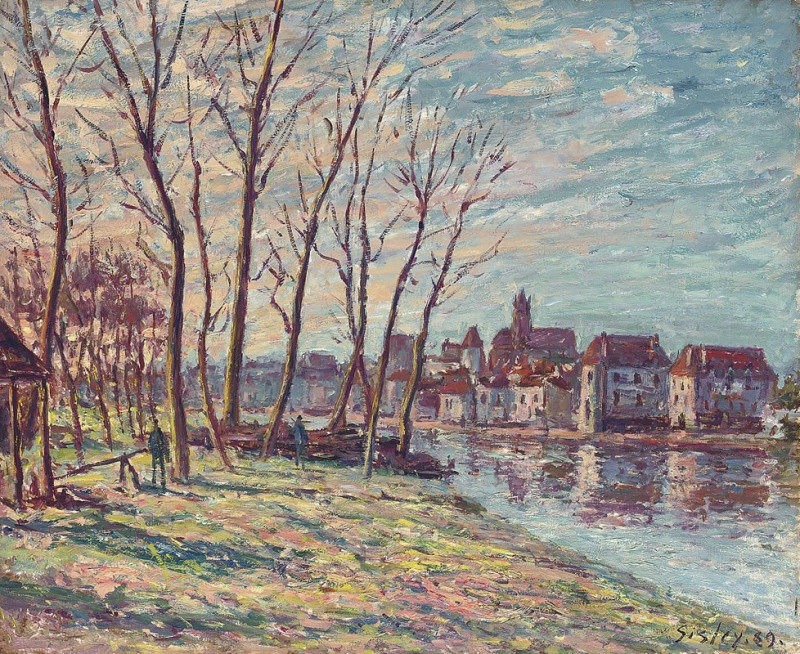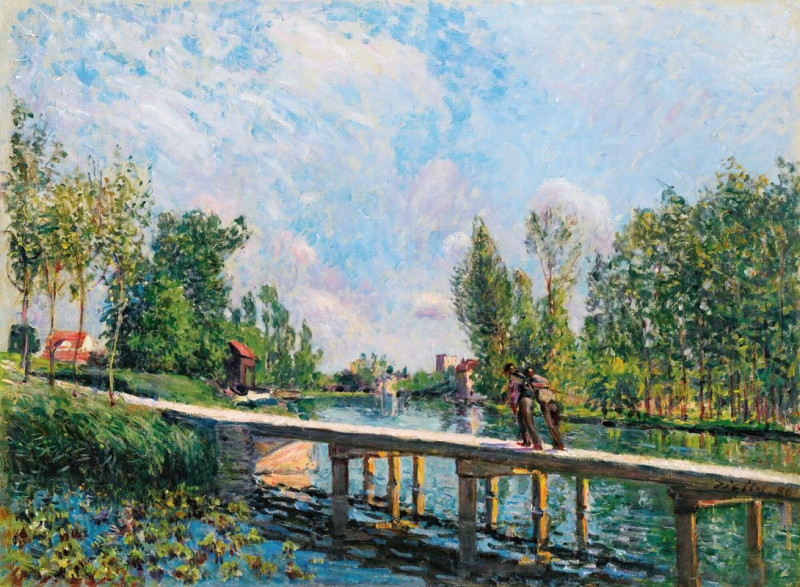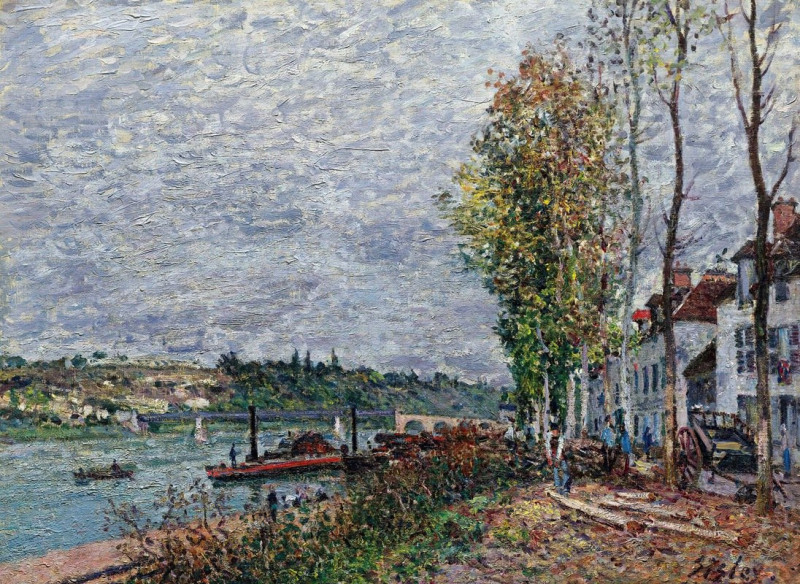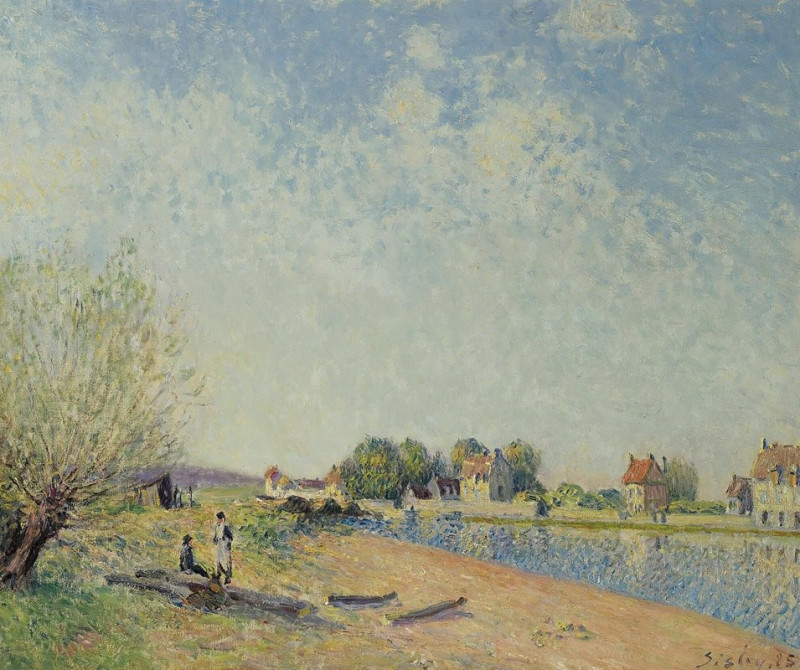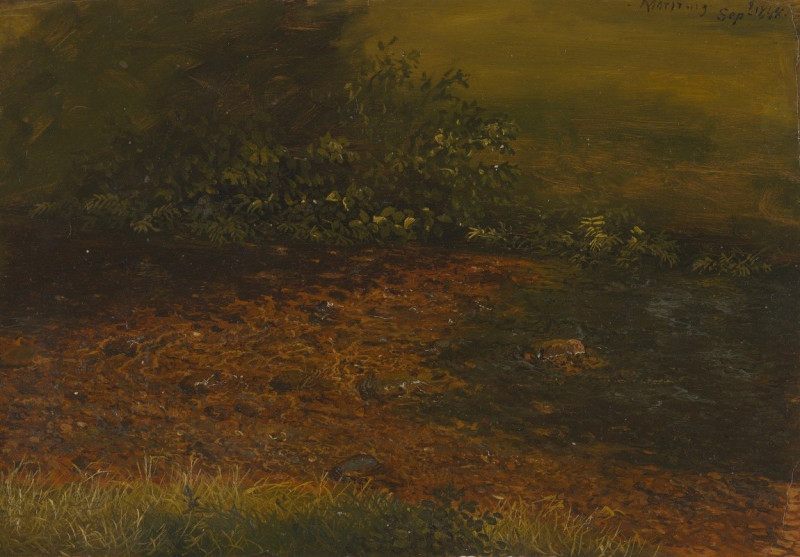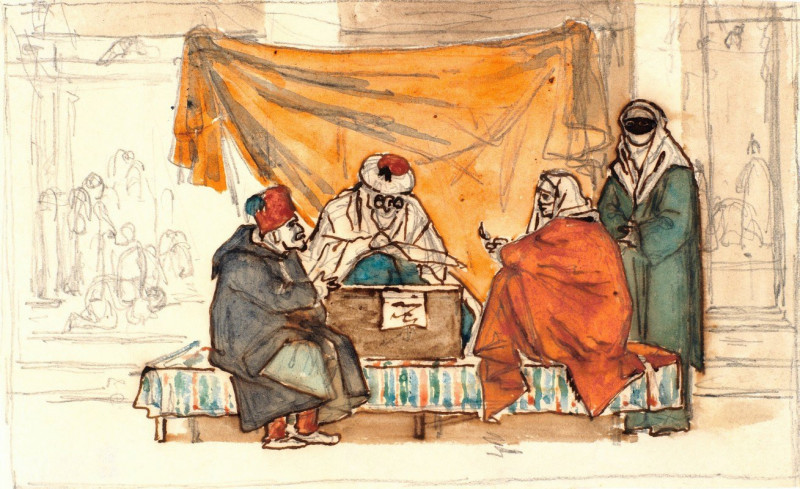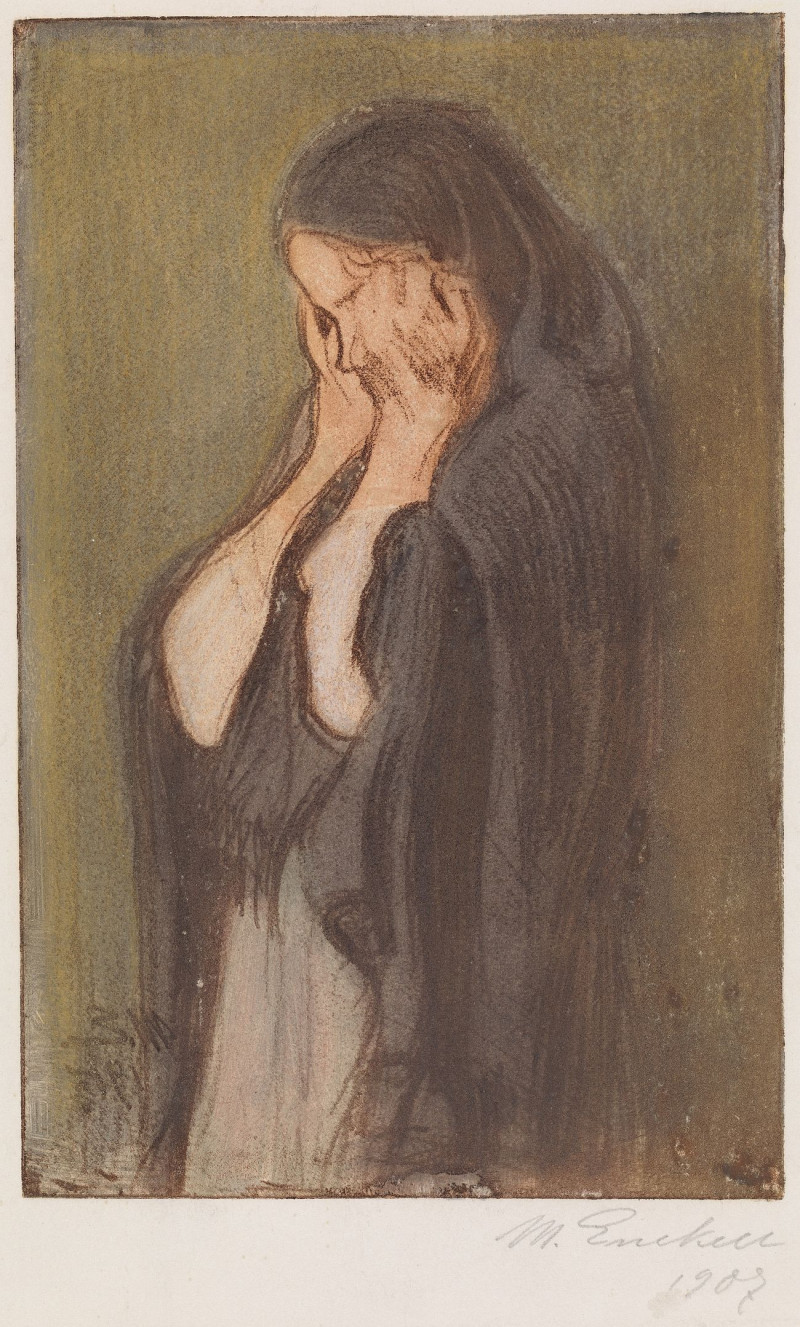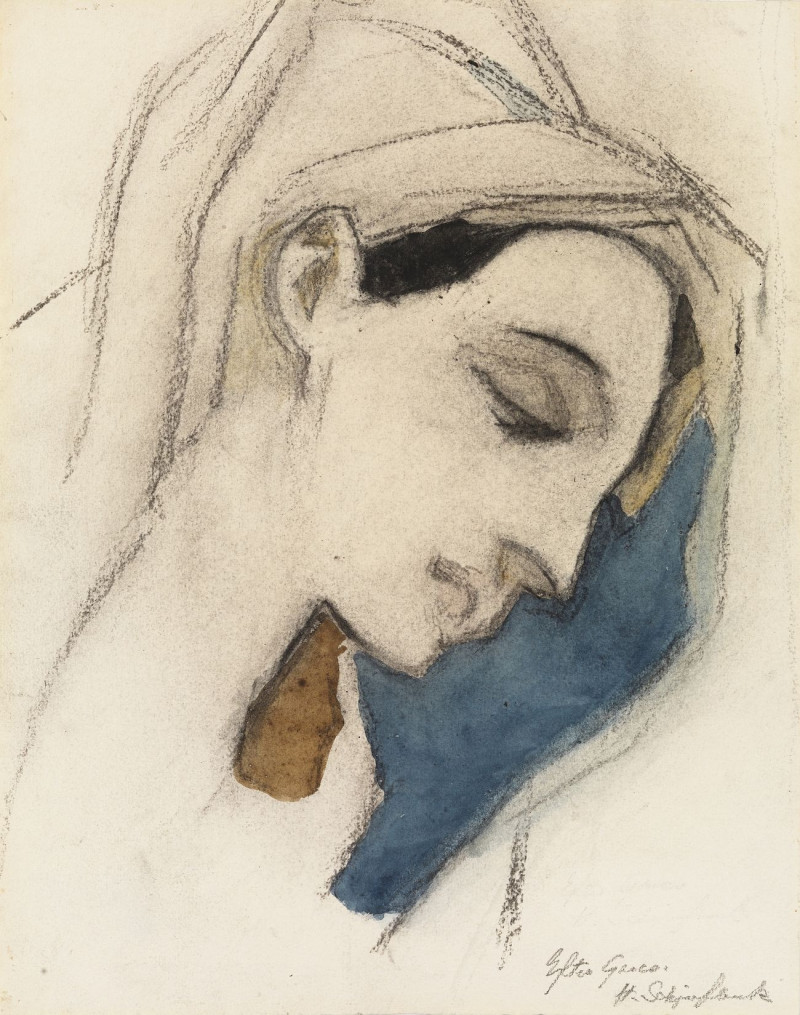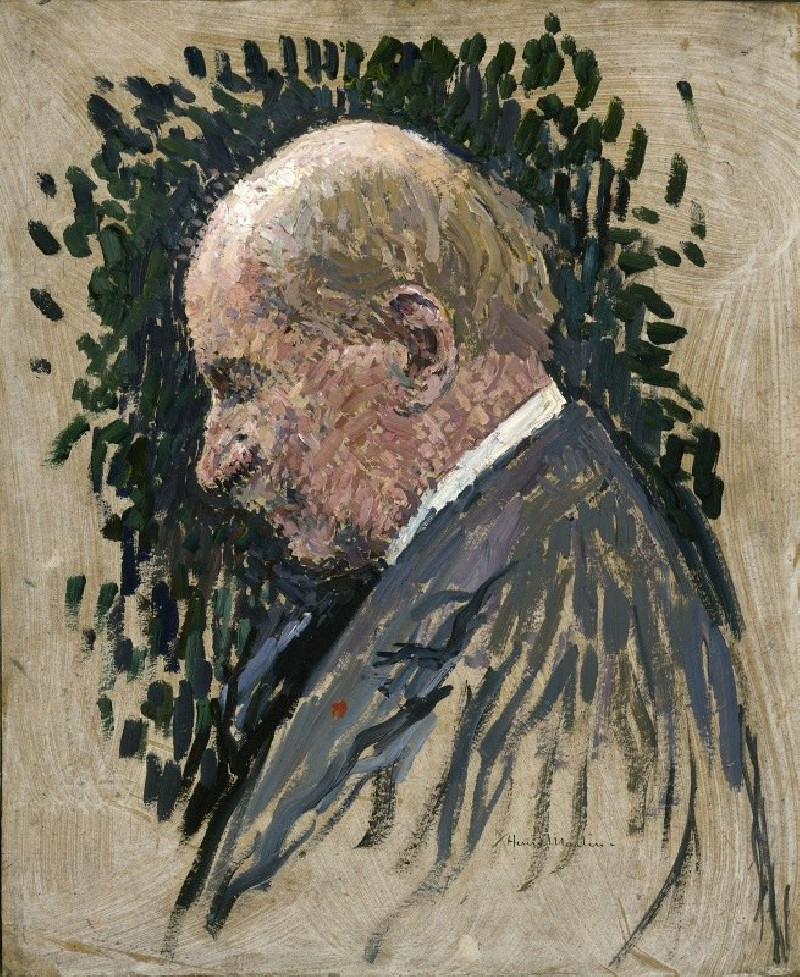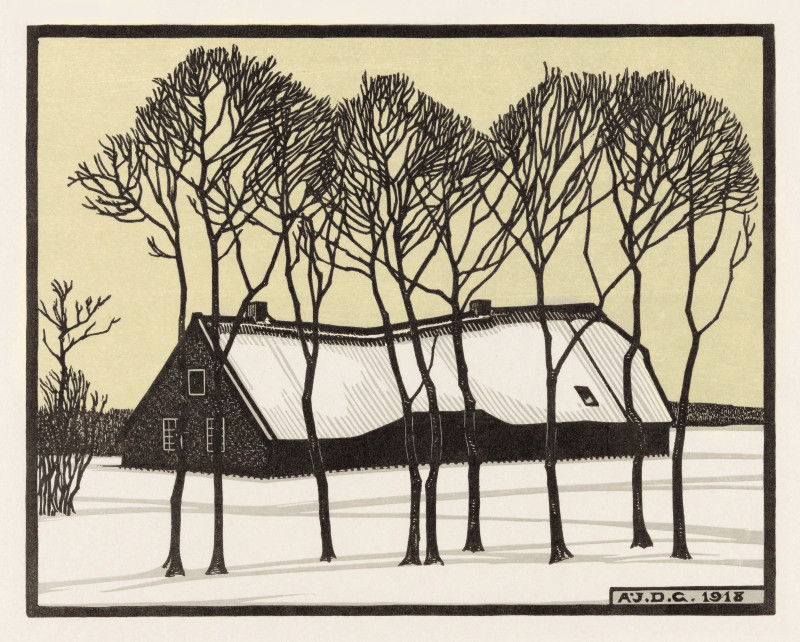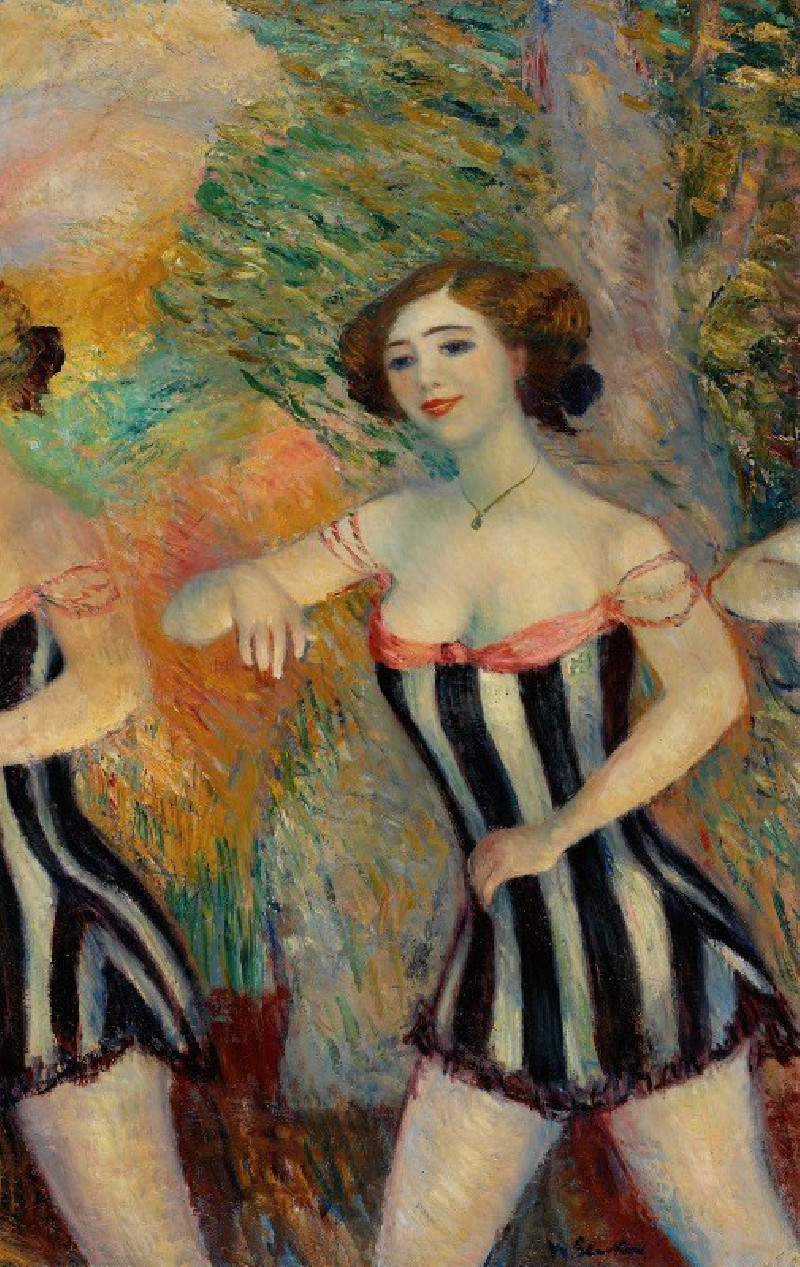Les scieurs de long (1876)
Technique: Giclée quality print
Recommended by our customers
More about this artwork
Experience the rustic charm of rural labor captured in Alfred Sisley’s 1876 painting, "Les scieurs de long" ("The Long Sawyers"). This exquisite piece of art serves as a vivid document of the past, illustrating the meticulous craft of wood sawing, an essential yet arduous task during Sisley’s time.The painting features a pair of sawyers at work, utilizing a long saw to cut a large tree trunk positioned beneath a substantial wooden frame. This frame, forming a towering A-shape, seems to be uniquely constructed for the task, highlighting the ingenuity and practical skills of workers in the 19th century. The focal point of the composition, this setup captures not only the physical exertion of the laborers, whose poses suggest concentration and effort, but also the synergy and coordination necessary to accomplish such demanding work.Set against a backdrop of a serene sky painted with gentle strokes of blue and soft whites, the scene is bathed in natural light, suggesting a late afternoon setting. Sisley’s masterful use of light and shadow intensifies the depth of the scene and enriches the textures of the wooden materials and ragged foliage around the work site.In the background, a glimpse of daily life continues with figures engaging in casual activities near modest village buildings. This adds a layer of everyday normalcy to the otherwise intensely focused scenario."Les scieurs de long" is a masterpiece that not only highlights Alfred Sisley’s precision in landscape and figure painting but also serves as a thoughtful reflection on the themes of labor and rural life.
Delivery
Returns
Alfred Sisley (1839–1899), an English impressionist artist, was renowned for his breathtaking impressionist landscape paintings. Born in 1839 to a wealthy family in Paris, Sisley spent most of his life in France. Despite being intended for a career in commerce, he rebelled and pursued his passion for painting as an amateur in the studio of Charles Gleyre, where he befriended artists Claude Monet and Pierre-Auguste Renoir. The financial loss of his family in the Franco-German War led Sisley to make a career out of his art, though it left him financially distressed. It wasn't until after his passing in 1899 that the true value of his work was recognized.

